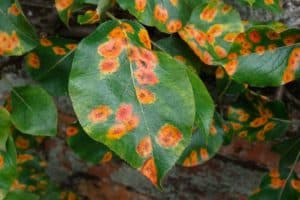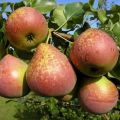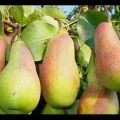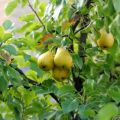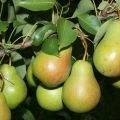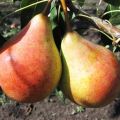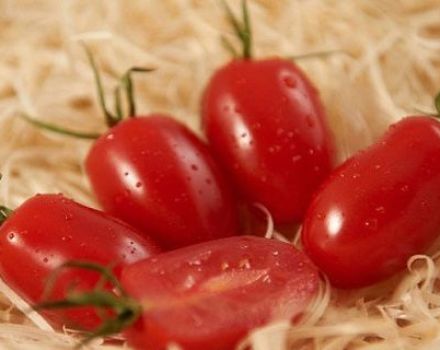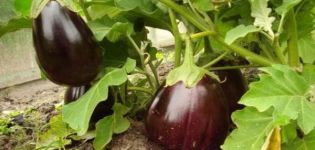Description and characteristics of pears of the Enchanting variety, planting technology and care
Pear of the Enchanting variety is an achievement of Russian breeders, a popular variety in the CIS countries. The harvest is abundant, the fruits have a presentation. You can grow a crop for sale or for personal consumption. You should first familiarize yourself with all the features of the species.
Description, characteristic features
The hybrid variety was bred by breeders from the All-Russian Institute of Horticulture S. Yakovlev, I. Saveliev, V. Chivilev. To obtain a variety, the varieties Talgar Beauty and Daughter of Dawn were taken as parents.
Pear Extravaganza has been listed in the state register since 2006. It is grown even beyond the Urals, since the tree easily adapts to harsh climates.The variety is considered late ripening, withstands frosts down to -45 degrees.
Yield
From 1 tree, 40-50 kilograms of pears are harvested per season. The variety is widely in demand among farmers who collect up to 140 centners of fruit from a hundred square meters.
They are stored in a cool place for up to six months, without losing their presentation, taste.
Trees
Trees grow unhealed, with drooping booths, resembling a pyramid in shape. The height is 1.5-2 meters, sometimes higher. The branches are powerful, arched, with a gray-brown bark without pubescence. The leaves are emerald, small, with a pointed tip. Trees bear fruit 5 years after the seedlings are planted.

Fruit
Pears grow in weight from 125 to 215 grams, with an even, slightly oily rind. Ripe fruits become amber with a barely noticeable raspberry tint. During storage, a burgundy undertone is visible. The fruit hangs on an elongated stalk, without a funnel. The pulp is white, juicy. Pears are sweet, with a pronounced aroma, slightly tart.
The Enchanting variety received an assessment of 4.5 points from the tasters.
Scope of application
Enchanting pears are used to decorate desserts, added to baked goods, and eaten fresh. You can harvest them for the winter, make jams, jams, cook compotes.
Also, delicious candied fruits are obtained from fruits, drying.
Transportability
Pears withstand long distance transportation. They are famous for their high keeping quality, but subject to storage rules. Slightly unripe pears should be transported.
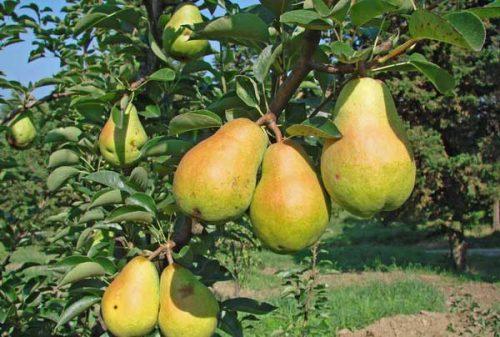
The main advantages and disadvantages of the Enchanting variety
The Enchanting pear variety has many advantages, but there are also negative features.
| pros | Minuses |
| High yield | When the bush thickens, the fruits become smaller |
| Frost resistance | |
| Great fruit taste | |
| Long shelf life and transportability | |
| When the wind blows, ripe fruits do not fall | |
| A pear is rarely exposed to diseases, pests |
How to grow a culture
Pear Extravaganza is grown in a standard way for the culture. It is necessary to find the right place for it, plant it on time, preparing the planting material.
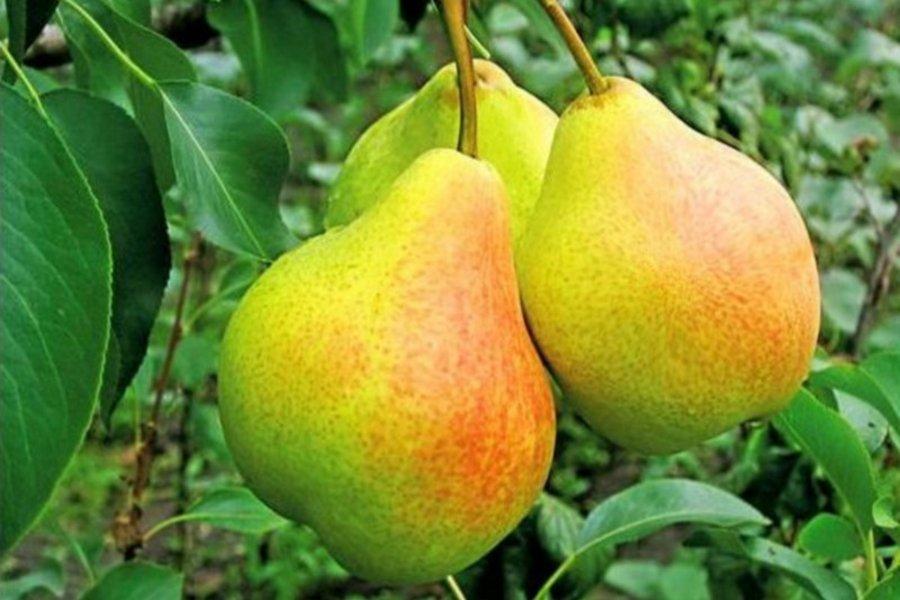
Choice of time and place
It is optimal to plant pear seedlings in March, before the juices move, so that before the cold weather arrives, they have time to take root. The place is chosen sunny, open, but lowlands should not be preferred. Moisture accumulates there, rhizome decay is possible.
They have been preparing the soil in the fall, plowing it with a shovel bayonet. When digging a hole, the soil is thrown out on 2 sides - separately the upper and lower layers. Organic or mineral compounds are added to the fertile substrate, mixed.
Preparation of planting material
The seedlings are checked for damage and discarded. The rhizomes are straightened, they are dipped in a growth stimulator like Epin, Matador, for 30 minutes. Additionally, you can lower the seedlings in a weak manganese solution for the purpose of disinfection.

Landing technology
It is necessary to plant a pear according to the diagram below.
- The hole must be at least 60 cm deep and 80 cm wide.
- A drainage layer of broken bricks and pebbles is placed on the bottom.
- Humus, compost are introduced, the soil mixture is poured with water.
- After absorbing moisture, a mound is made in the center, a seedling with an open rhizome is placed on it. Container plants are planted in a depression along the height of the coma.
- The soil is covered, leaving the root collar above the soil.
- After, the earth is tamped around the trunk, irrigated with water.
When the trees are weak, they place a support in the middle, tie them to it. To preserve moisture, the trunk circumference is mulched with peat, humus, sawdust.
Further wood care
Caring for a pear Extravaganza involves regular watering, loosening the circle around the tree, fertilizing, treating pests and beetles. Additionally, the trunk is whitewashed, prepared for winter.
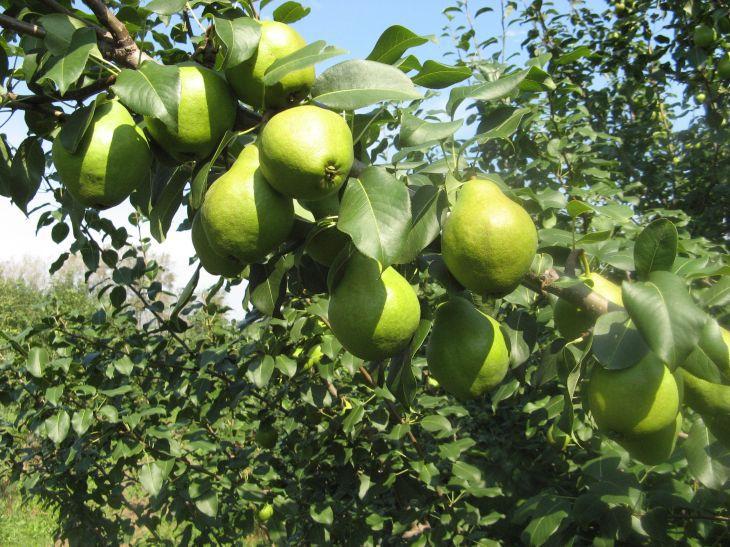
Irrigation, fertilization
The extravaganza pears should be irrigated once a month during the drought period; 50 liters of water are consumed per tree. When the season is rainy, they resort to 2-3 irrigations per growing season. Water the culture with pollen, during the formation of ovaries and after harvesting the fruits.
Fertilizers are applied according to the schedule:
- in March, before sap flow, add carbamide;
- before the start of the growing season, nitrogen-based funds are applied;
- after the wilting of the tree - phosphorus-potassium agents;
- in October, after harvesting the fruits, humus is introduced.
Due to the timely introduction of nitrogen, potassium, phosphorus, complex compounds, the quantity of the crop, the quality of fruit increases. You can also add organic matter: compost, manure.
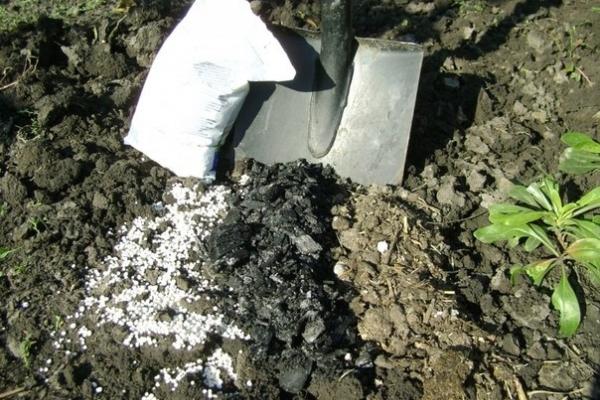
Pruning
In order for the pear to bear fruit regularly, it needs pruning.
- In the 1st year after planting the tree, the central stem is shortened at a height of 50 cm. Lateral shoots are cut over the buds.
- In the 2nd year, the middle conductor is formed by 20 cm, branches on the sides - by 5-6 cm. This will make it possible to get tiers on the bush.
In the future, trimming is carried out in the same way. They plan to form the shrub in late March or early April. Anti-aging pruning is done for old pears, skeletal or semi-skeletal shoots of 5-6 years old are greatly shortened.
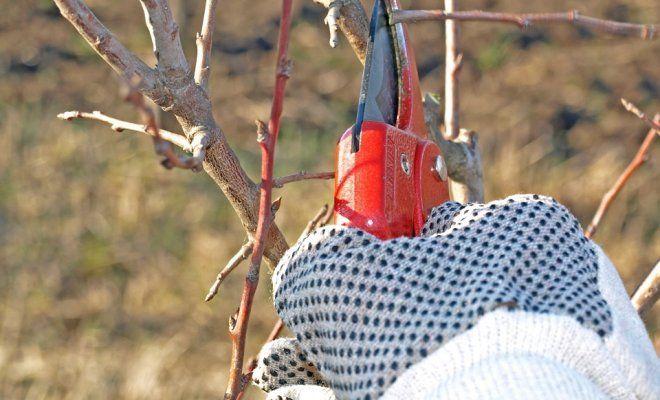
Whitewash
In autumn, the boles are whitewashed with lime with the addition of insect-fungicidal agents. Cover the pillar with a substance 70-80 cm from the roots. Due to whitewashing, the tree is protected from attacks of beetles, diseases.
Wintering
It is advisable to cut pears, cover with burlap or lutrasil in November. Thanks to the shelter, rodents do not attack the bole. The soil around the pillar is mulched with humus, peat, spruce branches.
Diseases, harmful beetles
Fairy pears have the most powerful immunity among other species. Pests rarely attack a pear. It is advisable to carry out prophylaxis in March with a 1% solution of Bordeaux liquid, 100 g of copper sulfate, 150 g of lime are dissolved in 10 liters of water.
Collection times and storage rules
Harvest pears when they turn yellowish green. Save fruits in a cool room like a basement, cellar. The air temperature should not exceed +5 degrees. Do not overdo the fruits on the branches, they can overripe, deteriorate.

